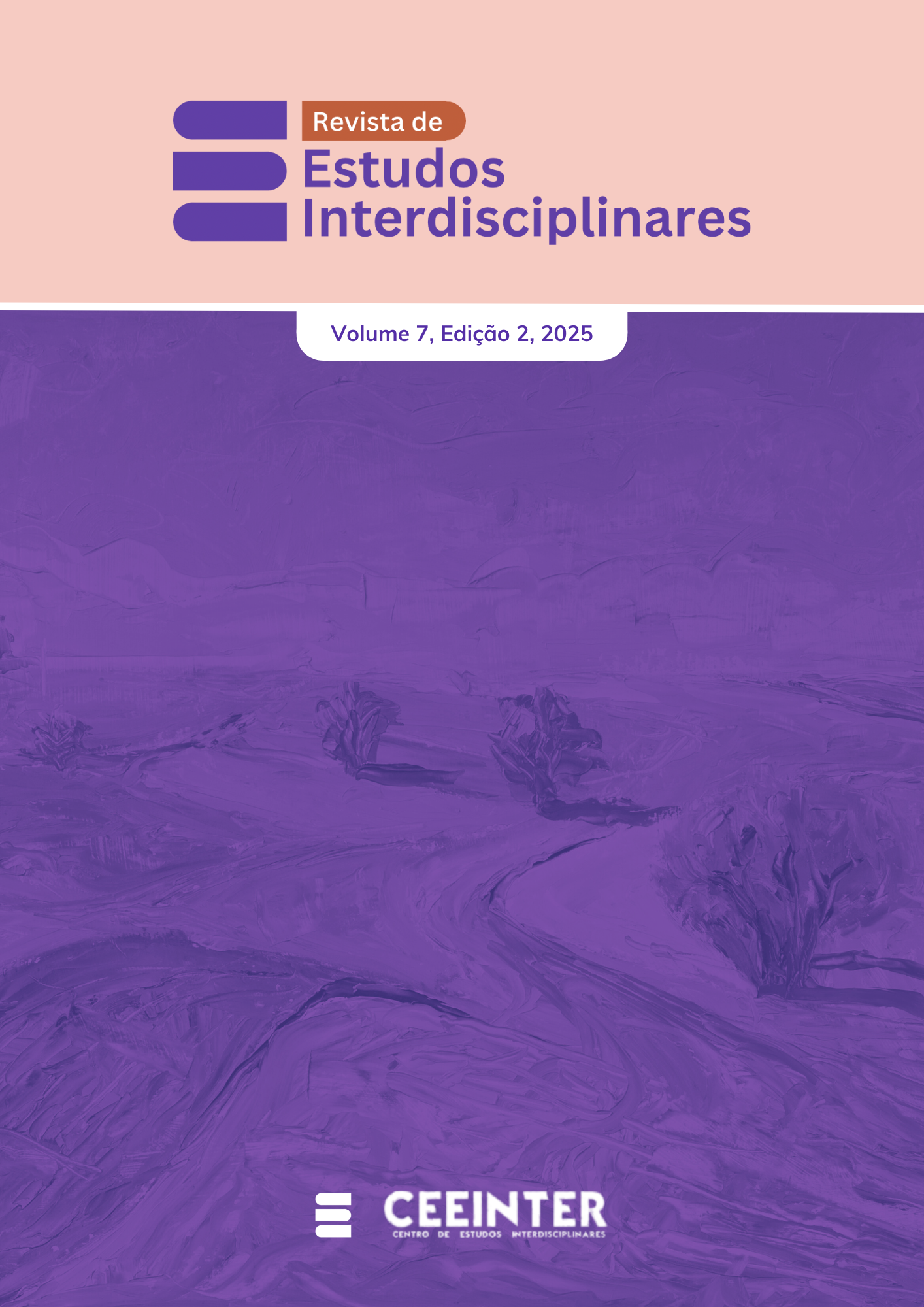USE OF TECHNOLOGY IN TEACHING HUMAN ANATOMY
An Overview
Visualizações: 221DOI:
https://doi.org/10.56579/rei.v7i2.1638Keywords:
Anatomy, Medical Education, Health Education, Educational Technology, Technological DevelopmentAbstract
Introduction: Transformations in the healthcare field, characterized by the introduction of new disciplines and the transition to competency-based teaching methods, have had a substantial impact on the teaching of anatomy. As a result, there has been a shift in the role played by cadaver dissection, which has incorporated contemporary technologies such as plastic models and multimedia packages. In this context, the inclusion of technology in educational programs requires a careful, evidence-based approach. This study aims to investigate the use of technologies in teaching human anatomy to health science students, with an emphasis on the technological tools used and the results obtained. Methodology: A literature overview was conducted with studies published in the last 10 years. Studies in the form of articles with free access were included. The DeCSMeSH descriptors used and their combinations were applied to the Medline (via Pubmed), Lilacs, and Scielo databases. The selection of articles was made on the Rayyan platform, according to established inclusion and exclusion criteria, in a blinded process by two reviewers. At the end of the process, 8 articles were included. Results: The results obtained were described in text and organized in a table. The data observed showed the growing use of technologies in teaching human anatomy, focusing on the use of computers, tablets, 3D resources, and augmented reality. Conclusion: The current teaching landscape in the health field reveals a tendency towards adopting innovative educational technologies. Methodologies that incorporate technology into traditional anatomy laboratory environments have proven effective, promoting student satisfaction, self-confidence, and engagement.
Downloads
References
BERGMAN, E. M et al. How much anatomy is enough?. Anatomical sciences education, v. 1, n. 4, p. 184-188, 2008. DOI: https://doi.org/10.1002/ase.35
CRAIG, Steven et al. Review of anatomy education in Australian and New Zealand medical schools. ANZ journal of surgery, v. 80, n. 4, p. 212-216, 2010. DOI: https://doi.org/10.1111/j.1445-2197.2010.05241.x
DRAKE, Richard L. et al. Medical education in the anatomical sciences: The winds of change continue to blow. Anatomical sciences education, v. 2, n. 6, p. 253-259, 2009. DOI: https://doi.org/10.1002/ase.117
FLEXNER, Abraham. Medical education in the United States and Canada: A report to the Carnegie Foundation for the Advancement of Teaching.[Selections]. Carnegie Foundation for the Advancement of Teaching., 1910.
FRYER, AW, Hemmer PA. 2012. Modelos de avaliação de programas e teorias relacionadas: guia AMEE No. 67. Med Teach 34:288–299.
Ghosh SK. Human cadaveric dissection: a historical account from ancient Greece to the modern era. Anat Cell Biol. 2015;48(3):153–69. DOI: https://doi.org/10.5115/acb.2015.48.3.153
Jang S, Vitale JM, Jyung RW, Black JB. A manipulação direta é melhor do que a visualização passiva para aprender anatomia em um ambiente de realidade virtual tridimensional. Computação. Educ. 2017;106:150-65.
Kapralos B, Uribe-Quevedo A, Dubrowski A. Immersive technologies for medical education. In: Lee N, editor. Encyclopedia of computer graphics and games. Ney York City: Springer International Publishing; 2018. pp. 1–8. DOI: https://doi.org/10.1007/978-3-319-08234-9_130-1
Louw G, Eizenberg N, Carmichael SW. The place of anatomy in medical education: AMEE guide no 41. Med Teach. 2009;31:373–86. DOI: https://doi.org/10.1080/01421590902825149
Mangina E. 3D learning objects for augmented/virtual reality educational ecosystems. 2017 23rd International Conference on Virtual System & Multimedia; VSMM'17; Octover 31-November 4, 2017; Dublin. IEEE; 2017. pp. 1–6. DOI: https://doi.org/10.1109/VSMM.2017.8346266
McLachlan JC, Bligh J, Bradley P, Searle J. Teaching anatomy without cadavers. Med Educ. 2004;38(4):418–24. DOI: https://doi.org/10.1046/j.1365-2923.2004.01795.x
Muller JH, Jain S, Loeser H, Irby DM. Lessons learned about integrating a medical school curriculum: perceptions of students, faculty and curriculum leaders. Med Educ. 2008;42:778–85. DOI: https://doi.org/10.1111/j.1365-2923.2008.03110.x
Papa V, Vaccarezza M. Teaching anatomy in the XXI century: new aspects and pitfalls. Sci World J. 2013;7(2013):310348. DOI: https://doi.org/10.1155/2013/310348
Salzman MC, Dede C, Loftin RB, Chen J. A model for understanding how virtual reality aids complex conceptual learning. Presence (Camb). 1999;8(3):293–316. DOI: https://doi.org/10.1162/105474699566242
Turney BW. Anatomy in a modern medical curriculum. The Annals of The Royal College of Surgeons of England. 2007;89(2):104-7. DOI: https://doi.org/10.1308/003588407X168244
McKeough DM, Bagatell N. Attitudes of health care students about computeraided neuroanatomy instruction. J Allied Health. 2009;38(4):189–95
Ryan, Grace V et al. Learning Outcomes of Immersive Technologies in Health Care Student Education: Systematic Review of the Literature. Journal of medical Internet research vol. 24,2 e30082, 2022. DOI: https://doi.org/10.2196/30082
Rodríguez-Abad, Carlos et al. “A Systematic Review of Augmented Reality in Health Sciences: A Guide to Decision-Making in Higher Education.” International journal of environmental research and public health vol. 18,8 4262, 2021. DOI: https://doi.org/10.3390/ijerph18084262
BOFF, Tália Cássia et al. O uso da tecnologia no ensino da anatomia humana: revisão sistemática da literatura de 2017 a 2020. Medicina (Ribeirão Preto), v. 53, n. 4, p. 447-455, 2020. DOI: https://doi.org/10.11606/issn.2176-7262.v53i4p447-455
OSORIO-TORO, Sonia; RODRIGUEZ-CAMPO, Alejandro; RAMIREZ-MALULE, Howard. Bibliometric Analysis of Global Research Output on Teaching and Learning of Human Anatomy. Int. J. Morphol., Temuco , v. 40, n. 3, p. 789-795, 2022 . DOI: https://doi.org/10.4067/S0717-95022022000300789
Zitzmann, Nicola U et al. “Digital Undergraduate Education in Dentistry: A Systematic Review.” International journal of environmental research and public health vol. 17,9 3269. 7 May. 2020, doi:10.3390/ijerph17093269 DOI: https://doi.org/10.3390/ijerph17093269
GARCIA, Leonardo Steven; ZUNIGA, Janneth; PEREZ-TREJOS, Luz Edith. Las Tecnologías E-Learning y TIC en el Aprendizaje a Largo Plazo de la Anatomía Humana en Estudiantes del Área de la Salud: Una Revisión de la Literatura. Int. J. Morphol., Temuco , v. 39, n. 2, p. 396-400, 2021. DOI: https://doi.org/10.4067/S0717-95022021000200396
Clunie, Lauren et al. “How comprehensive are research studies investigating the efficacy of technology-enhanced learning resources in anatomy education? A systematic review.” Anatomical sciences education vol. 11,3 (2018): 303-319. DOI: https://doi.org/10.1002/ase.1762
Rengier F, Mehndiratta A, Von Tengg-Kobligk H, Zechmann CM, Unterhinninghofen R, Kauczor HU, et al. 3D printing based on imaging data: review of medical applications. International journal of computer assisted radiology and surgery. 2010; 5(4), 335-341. DOI: https://doi.org/10.1007/s11548-010-0476-x
NARNAWARE, Yuwaraj; NEUMEIER, Melanie. Second‐year nursing students’ retention of gross anatomical knowledge. Anatomical sciences education, v. 13, n. 2, p. 230-236, 2020. DOI: https://doi.org/10.1002/ase.1906
AZER, Samy A.; AZER, Sarah. 3D anatomy models and impact on learning: a review of the quality of the literature. Health professions education, v. 2, n. 2, p. 80-98, 2016. DOI: https://doi.org/10.1016/j.hpe.2016.05.002
Marsh KR, Giffin BF, Lowrie Jr DJ. Medical student retention of embryonic development: impact of the dimensions added by multimedia tutorials. Anat Sci Ed. 2008;1(6):252–7 DOI: https://doi.org/10.1002/ase.56
Carbonell Carrera, C.; Bermejo Asensio, L.A. Landscape interpretation with augmented reality and maps to improve spatial orientation skill. J. Geogr. High. Educ. 2017, 41, 119–133. DOI: https://doi.org/10.1080/03098265.2016.1260530
Aziz MA, Mckenzie JC, Wilson JS, Cowie RJ, Ayeni SA, Dunn BK. The human cadaver in the age of biomedical informatics. The Anatomical Record: An Official Publication of the American Association of Anatomists. 2002; 269(1), 20-32. DOI: https://doi.org/10.1002/ar.10046
Downloads
Published
How to Cite
Issue
Section
License
Copyright (c) 2025 Interdisciplinary Studies Journal

This work is licensed under a Creative Commons Attribution 4.0 International License.
The Journal of Interdisciplinary Studies adopts the Creative Commons Attribution 4.0 International License (CC BY 4.0), which allows for sharing and adapting the work, including for commercial purposes, provided proper attribution is given and the original publication in this journal is acknowledged.













